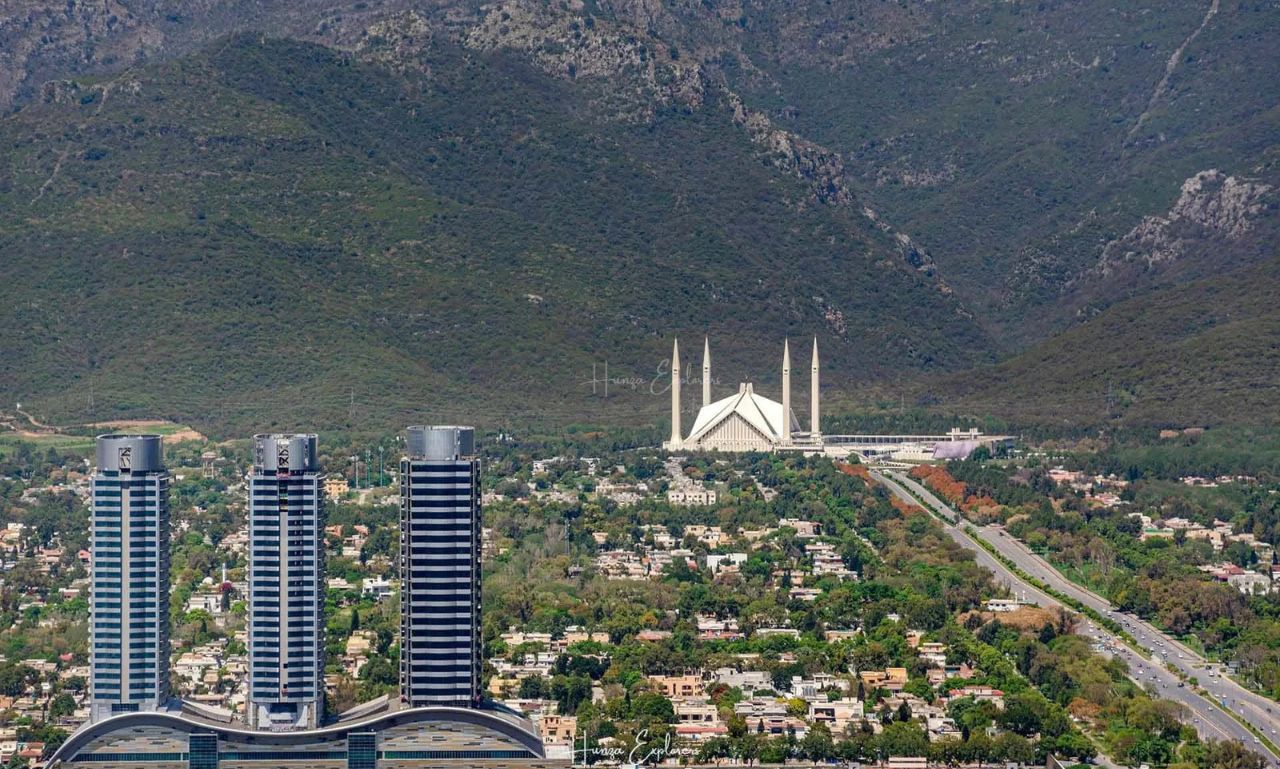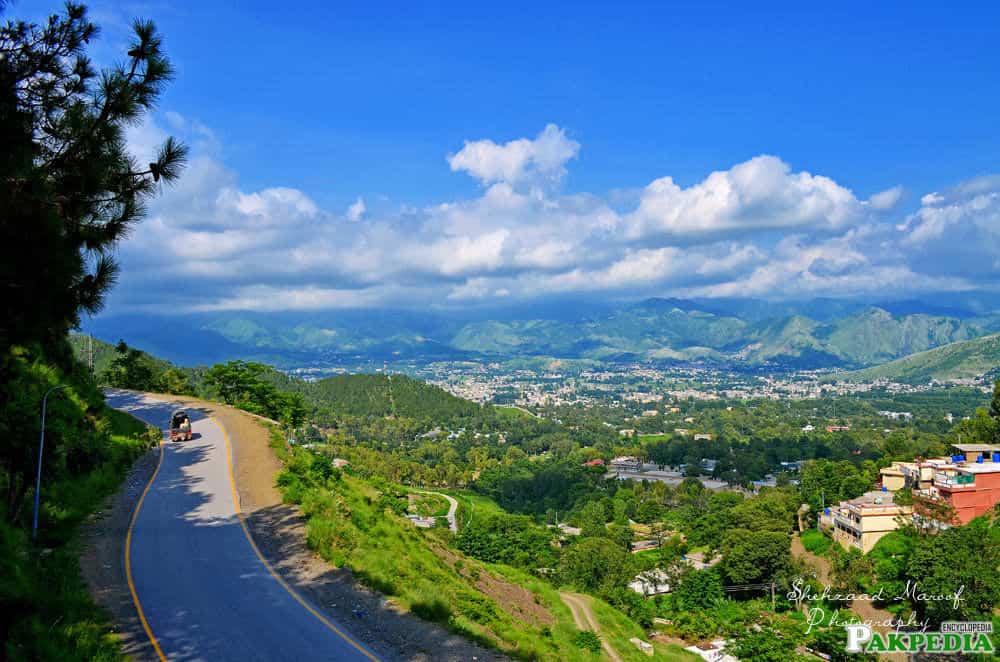Travel
Tourism: A Gateway to Cultural Exchange and Economic Growth
Published
2 months agoon
Tourism has long been a driving force behind economic growth and cultural exchange. The exploration of new places, understanding diverse cultures, and participating in leisure activities in unfamiliar environments are all essential components of tour-ism. As a key player in the global economy, tourism influences many sectors such as hospitality, transportation, and entertainment, while simultaneously promoting the cultural heritage of the host destinations. This article explores the importance of tourism, the various types of tourism, and the challenges facing this ever-growing industry.
The Importance of Tourism
Economic Impact
Tourism is one of the largest global industries, contributing significantly to the GDP of many countries. In 2019, the travel and tourism industry generated $9.2 trillion globally and supported 330 million jobs. Countries such as France, Spain, the United States, and Thailand are prime examples of destinations where tour-ism is a major economic contributor. The industry creates jobs across various sectors, from accommodation and transportation to food services and retail. Local businesses benefit greatly from tourist spending, creating a multiplier effect that stimulates the entire economy.
Moreover, tour-ism is a major source of foreign exchange, helping countries to diversify their income sources. For many developing nations, tourism serves as a critical engine for economic development, attracting international investments in infrastructure, services, and facilities. Governments often invest in airports, roads, and other forms of infrastructure to cater to tourists, which in turn benefits local communities.
Cultural Exchange and Preservation
Beyond its economic advantages, tour-ism fosters cultural exchange and understanding. Tourists, by exploring new cultures, traditions, and lifestyles, gain insights into ways of life that may be vastly different from their own. This interaction helps break down barriers, leading to more tolerance and acceptance among diverse communities. The cultural exchange inherent in tourism can also lead to the preservation and promotion of local heritage, arts, and traditions. For instance, many local festivals, craft markets, and traditional performances gain visibility through tourism, ensuring their survival in a rapidly modernizing world.
Environmental and Ecotourism
Tourism also plays a significant role in environmental conservation. With the rise of ecotourism, tourists are increasingly drawn to natural destinations such as national parks, rainforests, and marine reserves. Ecotourism promotes the idea that nature should be conserved and appreciated responsibly. Many ecotourism initiatives support conservation efforts, provide jobs for local communities, and educate travelers about the importance of protecting biodiversity. Popular ecotourism destinations include Costa Rica, Kenya, and New Zealand, where sustainable tourism practices are implemented to minimize environmental impacts.
Types of Tourism
Leisure Tourism
Leisure tour-ism remains the most popular form of travel. It includes activities such as beach holidays, cruises, city tours, and theme park visits. Whether travelers are looking for relaxation or adventure, leisure tourism offers a wide range of experiences catering to all tastes. Iconic destinations such as the beaches of Hawaii, the bustling streets of Paris, and the vibrant markets of Marrakech continue to attract millions of tourists each year.
Cultural Tourism
Cultural tour-ism is focused on experiencing the customs, history, art, and heritage of different destinations. Travelers seeking deeper connections with the places they visit often choose this type of tourism. For example, visiting ancient temples in Japan, exploring the ruins of Machu Picchu, or attending traditional ceremonies in India are all popular cultural tour-ism activities. This form of tourism promotes greater understanding and appreciation of different cultures, while also contributing to the preservation of cultural assets.
Adventure Tourism
For the thrill-seekers, adventure tourism provides excitement through activities such as hiking, rafting, scuba diving, and safaris. Adventure tourists are drawn to destinations that offer unique physical challenges and a close connection with nature. Countries like Nepal, known for trekking in the Himalayas, and Australia, famous for diving in the Great Barrier Reef, have become hotspots for adventure tour-ism. This sector often overlaps with ecotourism, as many of these activities occur in natural settings.
Medical Tourism
Medical tour-ism has emerged as a growing trend, where individuals travel to other countries to receive medical treatments or procedures. This type of tourism is often driven by the need for lower costs, better quality care, or treatments not available in one’s home country. Countries such as Thailand, India, and Mexico have become leading destinations for medical tourists due to their advanced healthcare systems and affordable prices. Medical touri-sm not only provides patients with necessary treatments but also boosts the economies of the host countries.
Business Tourism
Business tour-ism involves travel for work-related activities, such as attending conferences, meetings, or trade fairs. Although business travelers may not have much leisure time during their trips, many extend their stays to explore the destination once their professional commitments are complete. Cities such as London, New York, and Dubai are popular business tourism hubs, hosting major international events that attract thousands of professionals from around the world.
Challenges Facing Tourism
Overcrowding and Overtourism
Overtourism is one of the biggest challenges facing the tour-ism industry today. Popular tourist destinations often struggle with overcrowding, which can lead to the degradation of natural environments and cultural sites. Venice, Machu Picchu, and the Galápagos Islands are prime examples of destinations where the influx of tourists has put significant strain on local resources. In response, some governments have implemented restrictions on the number of visitors allowed, and others are promoting alternative, less-frequented destinations to distribute the flow of tourists more evenly.
Environmental Degradation
While tourism can promote environmental conservation, it can also contribute to its destruction. Large-scale tour-ism development projects, such as the construction of hotels, airports, and resorts, can lead to habitat loss, pollution, and the depletion of natural resources. Unsustainable tourism practices, such as littering, improper waste management, and overuse of water resources, can severely impact fragile ecosystems. Therefore, it is essential for both tourists and tourism operators to prioritize sustainability and adopt eco-friendly practices.
Impact on Local Communities
Tourism can sometimes disrupt local communities, particularly in cases where rapid development leads to displacement, cultural commodification, and economic inequality. In some regions, the growth of tour-ism has resulted in skyrocketing property prices, pushing out local residents in favor of luxury resorts and hotels. This can create resentment and tension between locals and tourists. To mitigate these effects, community-based tourism initiatives are being promoted, which encourage local ownership and control of tourism enterprises.
The Effects of Global Crises
Global crises such as pandemics, economic recessions, and political instability can have a significant impact on the tourism industry. The COVID-19 pandemic, for example, brought the global tour-ism industry to a standstill, with international arrivals declining by 74% in 2020. This unprecedented crisis led to massive job losses, business closures, and a sharp decline in travel demand. As the world recovers, the tour-ism industry must adapt to new realities, such as changing consumer preferences and stricter health and safety protocols.
Conclusion
Tourism is a dynamic and multifaceted industry that holds great potential for economic development, cultural exchange, and environmental conservation. While it offers numerous benefits to both tourists and host communities, it also presents challenges that need to be addressed through sustainable practices and responsible travel. By fostering a balance between economic growth, cultural preservation, and environmental stewardship, tourism can continue to thrive as a force for positive change in the world.
You may like

Introduction
Islamabad, the capital city of Pakistan, is known for its modern infrastructure, scenic beauty, and serene environment. Established in the 1960s, the city was designed to replace Karachi as the capital of Pakistan, and it represents the country’s vision of modernity and urban development. Islamabad stands out due to its organized layout, lush greenery, and its proximity to the Margalla Hills, making it one of the most picturesque capitals in the world.
History and Foundation
Islamabad’s foundation was laid in 1960 under the government of General Ayub Khan. The decision to move the capital from Karachi was driven by several factors, including the need for a central location, climate suitability, and the desire to move the capital away from the coast, reducing vulnerabilities to foreign invasion. Renowned Greek architect and town planner, Constantinos Apostolou Doxiadis, designed the city’s master plan.
Before its establishment, the area where Islamabad now stands was sparsely populated with small villages and ancient settlements. The site was selected near Rawalpindi, which served as the interim capital during the transition period.
Geography and Climate
Islamabad is located in the northern part of Pakistan, nestled against the foothills of the Margalla Hills, which are part of the Himalayan range. The city is spread over an area of 906 square kilometers and lies at an elevation of 507 meters (1,663 feet) above sea level. Its location provides residents with stunning views of the surrounding natural beauty.
Islamabad experiences a humid subtropical climate. The city enjoys four distinct seasons, with hot summers, mild winters, a rainy monsoon period, and a pleasant spring. The Margalla Hills significantly influence the weather, keeping the climate relatively cooler and more moderate compared to other cities in Pakistan, especially in summer.
City Layout and Architecture
Islamabad’s urban planning is renowned for its sector-based layout, ensuring well-organized residential, commercial, and governmental areas. The city is divided into eight main zones, including administrative, diplomatic, residential, commercial, educational, and rural areas, with sectors identified by letter and number combinations.
Each sector is self-sufficient, equipped with basic amenities such as markets, mosques, parks, and schools. Major commercial hubs include Blue Area, which runs parallel to the central sectors, and is home to offices, malls, and banks.
The architecture in Islamabad blends modernity with traditional Islamic styles. Some notable buildings include:
- Faisal Mosque: The largest mosque in Pakistan and an iconic symbol of the city, this mosque was designed by Turkish architect Vedat Dalokay. Its unique design combines modernist lines with traditional Islamic elements, creating a stunning structure that stands out against the backdrop of the Margalla Hills.
- Pakistan Monument: A symbol of the unity of the Pakistani people, this monument in Shakarparian Park represents the four provinces and three territories of Pakistan. It is shaped like a blooming flower, symbolizing the nation’s growth and unity.
Culture and Lifestyle
Islamabad is known for its calm and laid-back lifestyle. In contrast to the hustle and bustle of Pakistan’s larger cities like Karachi and Lahore, Islamabad offers a more serene environment. The city is often referred to as “the green city” due to its vast expanses of parks, forests, and tree-lined streets. Popular parks include Fatima Jinnah Park, Daman-e-Koh, and the Rawal Lake Park.
Being the capital city, Islamabad is home to a diverse population that includes diplomats, expatriates, and people from various regions of Pakistan. This diversity is reflected in the city’s culture, food, and festivals. While traditional Pakistani cuisine is available everywhere, Islamabad also boasts a range of international restaurants and cafes.
Islamabad’s cultural scene includes art galleries, theaters, and music festivals. Lok Virsa Museum and Pakistan National Council of the Arts (PNCA) are key cultural institutions, promoting local arts and heritage. The city also hosts various cultural events like the Pakistan National Folk Festival and literature festivals.
Economy and Education
Islamabad is a significant economic hub in Pakistan, especially for government services and the information technology sector. Its economy is largely driven by the federal government, embassies, and multinational corporations. The city’s IT sector is growing rapidly, with the establishment of IT parks and companies such as PTCL, Mobilink, and other software firms.
Education is another highlight of Islamabad. It is home to some of the most prestigious educational institutions in Pakistan, including Quaid-e-Azam University, the National University of Sciences and Technology (NUST), and International Islamic University. The presence of high-quality schools, colleges, and universities attracts students from all over the country.
Tourism and Attractions
Islamabad is a gateway to some of Pakistan’s most beautiful northern areas, but the city itself has much to offer visitors:
- Daman-e-Koh: A scenic viewpoint located in the Margalla Hills, offering panoramic views of Islamabad, especially at sunset.
- Rawal Lake: A man-made lake that provides a peaceful retreat for picnics, boating, and bird-watching.
- Saidpur Village: A centuries-old village at the foot of the Margalla Hills, restored to showcase traditional architecture and culture, with restaurants and cultural exhibits.
- Shah Faisal Mosque: A must-visit for tourists due to its architectural beauty and cultural significance.
Additionally, Islamabad’s proximity to Murree, Nathia Gali, and other hill stations makes it an ideal base for tourists seeking both urban and natural experiences.
Challenges and Future Prospects
While Islamabad is one of the most well-planned cities in Pakistan, it still faces challenges. Urban sprawl, rapid population growth, and the pressure on infrastructure are concerns for city planners. However, efforts are ongoing to expand the city’s facilities while maintaining its green character.
In recent years, Islamabad has seen an increase in high-rise buildings and real estate development. As Pakistan’s IT sector grows, Islamabad is becoming a hub for startups and tech companies, leading to a more vibrant economic future for the city.
Conclusion
Islamabad represents the modern face of Pakistan, blending contemporary development with the country’s rich cultural heritage. It is a city that values both progress and nature, offering a peaceful yet dynamic lifestyle to its residents and visitors. As it continues to grow, Islamabad is poised to remain a key player in Pakistan’s political, economic, and cultural landscape.
Travel
Abbottabad: A Scenic City with a Rich Historical Legacy
Published
2 months agoon
October 22, 2024
Abbottabad, a picturesque city in the Hazara region of Pakistan’s Khyber Pakhtunkhwa province, stands out for its lush greenery, pleasant climate, and rich historical significance. Situated at an elevation of about 1,260 meters (4,140 feet), the city is surrounded by the scenic Sarban hills, drawing tourists and serving as a gateway to northern areas like Naran, Kaghan, and Gilgit-Baltistan.
Historical Background
In 1853, Major James Abbott, a British officer of the East India Company, founded Abbottabad. He established it as a military cantonment and played a key role in shaping its early development. Deeply moved by the beauty of the area, Major Abbott expressed his affection for the city in a heartfelt poem, lamenting his departure. Abbottabad quickly grew in prominence as a garrison town, largely due to its strategic location.
During British rule, Abbottabad became a center for military and administrative activities in the region. Even today, the city retains its historical military significance as it hosts the Pakistan Military Academy (PMA) in Kakul, where officers of the Pakistan Army are trained. This prestigious institution is a key part of the city’s identity.
Geography and Climate
Abbottabad enjoys a temperate climate with four distinct seasons. The summers are mild and pleasant, making it an ideal summer retreat for tourists escaping the heat of the plains. Winters can be cold, with occasional snowfall, transforming the city into a winter wonderland. The city’s moderate climate and its verdant surroundings contribute to its reputation as a “city of pines” due to the abundance of pine trees in and around the area.
Abbottabad’s geographical location is a major factor in its appeal. Situated along the Karakoram Highway, the city serves as a gateway to the northern areas of Pakistan, including the stunning landscapes of the Kaghan Valley, the Karakoram mountain range, and even the challenging trek routes leading to K2, the second-highest mountain in the world. As a result, it is often used as a base by adventure enthusiasts and tourists heading to these areas.
Education and Development
Abbottabad has also established itself as an educational hub. Apart from the Pakistan Military Academy, the city is home to several prestigious educational institutions, including the Ayub Medical College, COMSATS University, and the Army Burn Hall College, which cater to students from all over Pakistan.
The city’s infrastructure has developed significantly over the past few decades. While it still maintains its old-world charm with colonial-era bungalows and tree-lined streets, modern developments, including shopping malls, restaurants, and hotels, have sprung up, making it a blend of the old and new.
Tourism and Attractions
Tourism is a vital part of Abbottabad’s economy. Its natural beauty, cool climate, and historical significance attract both domestic and international visitors. Some of the popular tourist destinations in and around Abbottabad include:
- Shimla Hill: A scenic hilltop offering panoramic views of the city and its surroundings. It is a popular spot for hiking and picnics.
- Ilyasi Masjid: A historical mosque built over a natural spring. The mosque is known for its architectural beauty and the adjacent water reservoir, where visitors often enjoy a swim.
- Thandiani: Located around 31 kilometers from Abbottabad, Thandiani is a small hill station offering breathtaking views of the surrounding mountains and valleys. It is particularly popular during the summer months.
- Harnoi: A serene valley near Abbottabad, famous for its freshwater streams, picnic spots, and lush greenery.
- Ayubia National Park: Located near the city, this park is home to various wildlife species. Offers trekking paths like the famous “Pipeline Track,” providing scenic views of the forested hills.
Abbottabad’s Role in Recent History
In recent times, Abbottabad came into the international spotlight in May 2011 when Osama bin Laden. The leader of the terrorist organization Al-Qaeda was found and killed in a secret U.S. Navy SEAL operation in the city. The operation took place in a compound located near the Pakistan Military Academy in Kakul. This incident drew significant global media attention to Abbottabad. However, it has since returned to its quieter and more peaceful existence.
Conclusion
Abbottabad is a city of contrasts—a blend of colonial history and modern development. Serene tourist destination, and a center of military training. Its pleasant weather, scenic landscapes, and historical charm make it a unique city in Pakistan. Drawing visitors who seek natural beauty, history, and adventure. Whether it’s a leisurely stroll through its tree-lined streets or an adventurous trek. Through the nearby mountains, Abbottabad offers something for everyone.
Travel
Exploring the Charm of Phuket Happiness Trips Turtle Village
Published
4 months agoon
August 29, 2024
Phuket, Thailand’s largest island, is a treasure trove of breathtaking beaches, vibrant culture, and exotic cuisine. Among its many attractions, Turtle Village stands out as a unique destination that offers both relaxation and excitement. This article will guide you through everything you need to know about Phuket Happiness Trips Turtle Village, from its luxurious accommodations to its engaging activities.
Discovering Turtle Village: An Introduction
Nestled in the serene area of Mai Khao Beach, Turtle Village is a shopping and dining complex that caters to travelers seeking a blend of comfort and cultural experiences. This quaint village is part of the larger Mai Khao area, which is known for its tranquil atmosphere and beautiful natural surroundings. Turtle Village is not just a stopover; it’s a destination that promises a memorable experience for every visitor.
Location and Accessibility
Phuket Happiness Trips Turtle Village is conveniently located just 15 minutes from Phuket International Airport, making it an ideal first stop for travelers arriving on the island. The village is easily accessible by taxi or shuttle service, and its proximity to luxury resorts like the JW Marriott and Anantara Vacation Club makes it a popular choice for tourists.
A Brief History of Turtle Village
Phuket Happiness Trips Turtle Village was developed as part of the Mai Khao region’s tourism initiative, aimed at creating a space where visitors could enjoy the beauty of Phuket’s natural environment while also indulging in high-end shopping and dining experiences. The name “Turtle Village” is inspired by the region’s connection to the endangered sea turtles that nest on Mai Khao Beach, adding a touch of environmental awareness to the area’s charm.
Luxurious Accommodations Nearby
While Turtle Village itself does not offer accommodations, it is surrounded by some of Phuket’s most luxurious resorts. Staying at one of these resorts ensures that you can fully enjoy all that Turtle Village offers while also experiencing the comfort and elegance of world-class lodging.
JW Marriott Phuket Resort & Spa
Located just a short walk from Turtle Village, the JW Marriott Phuket Resort & Spa is a five-star resort that offers a perfect blend of luxury and relaxation. With spacious rooms, multiple swimming pools, and a variety of dining options, this resort is a favorite among travelers. The resort also offers direct access to Mai Khao Beach, where guests can witness the nesting of sea turtles during certain seasons.
Anantara Mai Khao Phuket Villas
For those seeking a more private and exclusive experience, Anantara Mai Khao Phuket Villas provides luxury villas with private pools and stunning views of the surrounding landscapes. The resort’s proximity to Turtle Village allows guests to easily explore the shopping and dining options while enjoying the serene environment of their villa.
Shopping at Turtle Village
Phuket Happiness Trips Turtle Village is a shopper’s paradise, offering a variety of stores that cater to both tourists and locals. Whether you’re looking for souvenirs, clothing, or specialty items, Turtle Village has something for everyone.
Souvenir Shops
One of the highlights of shopping at Turtle Village is the selection of souvenir shops that offer unique and authentic Thai products. From handcrafted jewelry to traditional Thai textiles, these shops provide the perfect opportunity to take a piece of Phuket home with you. Popular souvenir items include coconut shell crafts, hand-painted silk scarves, and wooden carvings.
High-End Fashion and Accessories
For those with a taste for luxury, Turtle Village is home to several high-end fashion boutiques that offer everything from designer clothing to stylish accessories. These stores feature both international and local brands, ensuring that you can find the perfect outfit or accessory for any occasion.
Specialty Stores
Turtle Village also features many specialty stores that offer unique products not found elsewhere on the island. These include gourmet food shops, art galleries, and stores specializing in wellness products. Whether you’re looking for organic skincare products or gourmet Thai spices, Turtle Village has it all.
Dining at Turtle Village
Turtle Village is not just a shopping destination; it’s also a culinary haven. The village offers a variety of dining options, ranging from casual cafes to fine dining restaurants, ensuring that every meal is a delightful experience.
Thai Cuisine at The Coffee Club
The Coffee Club is a popular spot for those looking to enjoy a relaxed meal in a cozy setting. While it may be known for its coffee, the restaurant also offers a wide range of Thai dishes, including Pad Thai, Green Curry, and Tom Yum Soup. The Coffee Club is the perfect place to enjoy a leisurely breakfast or lunch while taking in the ambiance of Turtle Village.
International Flavors at Bill Bentley Pub
For those craving international cuisine, the Bill Bentley Pub offers a diverse menu that includes everything from classic pub fare to gourmet dishes. The pub is a favorite among tourists for its lively atmosphere and extensive drink menu, making it a great spot to unwind after a day of shopping.
Seafood Delights at Sea.Fire.Salt.
Sea.Fire.Salt. is a fine dining restaurant located within the Anantara Mai Khao Phuket Villas, offering a luxurious dining experience with a focus on fresh seafood. The restaurant’s menu features a variety of seafood dishes, all prepared with the freshest ingredients and presented with a modern twist. With its elegant setting and ocean views, Sea.Fire.Salt. is an ideal choice for a romantic dinner.
Activities and Attractions Near Turtle Village
While Turtle Village itself offers plenty to see and do, its location in the Mai Khao area also provides easy access to several other attractions and activities.
Mai Khao Beach: A Natural Paradise
Mai Khao Beach is one of the longest beaches in Phuket, stretching for 11 kilometers along the island’s northwest coast. The beach is part of the Sirinat National Park, making it a protected area where development is limited. This ensures that Mai Khao Beach remains a pristine and peaceful destination, perfect for sunbathing, swimming, or simply taking a leisurely stroll along the shore.
Turtle Conservation at Mai Khao Marine Turtle Foundation
For those interested in wildlife conservation, a visit to the Mai Khao Marine Turtle Foundation is a must. The foundation is dedicated to the conservation and protection of sea turtles that nest on Mai Khao Beach. Visitors can learn about the various conservation efforts being undertaken, including the protection of nesting sites and the rehabilitation of injured turtles. The foundation also offers educational programs and activities for children, making it a great family-friendly attraction.
Adventure at Splash Jungle Water Park
Just a short drive from Turtle Village, Splash Jungle Water Park offers a fun-filled day of water activities for the whole family. The park features a variety of water slides, a lazy river, and a wave pool, ensuring that there’s something for everyone. Whether you’re looking for adrenaline-pumping rides or a relaxing float down the river, Splash Jungle Water Park is a great addition to your Phuket itinerary.
Conclusion
Phuket Happiness Trips to Turtle Village offer a perfect blend of luxury, culture, and adventure. Whether you’re staying in one of the nearby resorts, shopping for unique souvenirs, or dining on exquisite cuisine, Turtle Village provides a unique experience that captures the essence of Phuket. With its convenient location, diverse offerings, and commitment to preserving the natural beauty of Mai Khao, Turtle Village is a must-visit destination for any traveler to Phuket.


Exploring the World of Zoos: Their Role, History, and Ethical Considerations

Sunflowers: The Radiant Wonders of the Natural World

The Role and Evolution of Pharmacies in Modern Healthcare

How Water Contamination Incidents Can Lead to Widespread Health Crises

Unlocking the Potential of Potassium Humate Fertilizer: Finding the Right Supplier

Reflecting on the Past: A Comparison of 2023-1954
Trending
-

 Health8 months ago
Health8 months agoHow Water Contamination Incidents Can Lead to Widespread Health Crises
-

 Business8 months ago
Business8 months agoUnlocking the Potential of Potassium Humate Fertilizer: Finding the Right Supplier
-

 Culture9 months ago
Culture9 months agoReflecting on the Past: A Comparison of 2023-1954
-

 entertainment9 months ago
entertainment9 months agoJudith Ivey – An Actress with Depth and Versatility
-

 entertainment9 months ago
entertainment9 months agoMadeline Wise: A Breakout Talent in Hollywood
-

 entertainment9 months ago
entertainment9 months agoThe Enchantment of Niles Garden Circus: An Insider’s Perspective
-

 Tech9 months ago
Tech9 months agoDizipal 608: A Comprehensive Guide to the Professional Document Scanner
-

 News10 months ago
News10 months agoCarla Diab: Navigating Legal Waters with Legacy, Luxury, and Legal Practice Ownership
